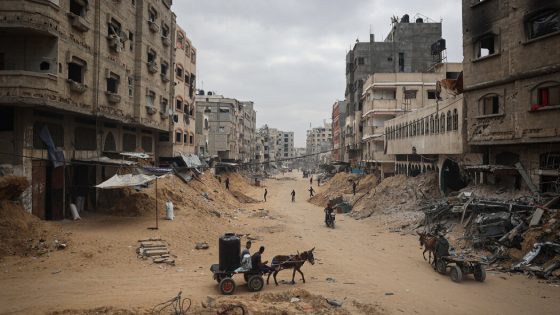In Jerusalem, Washington and beyond, eyes are fixed on Hamas, as officials wait to see how the group will respond to a proposal that has American and Israeli backing for a cease-fire in the Gaza Strip.
The proposal, after almost seven devastating months of war, includes the release of hostages held by Hamas and Palestinian prisoners in Israel, and the return of civilians to the largely depopulated northern part of Gaza; it would also allow for increased delivery of aid to the territory.
A Hamas spokesman, Osama Hamdan, said on Wednesday, “Our position on the current negotiating paper is negative.”
But the Hamas press office later said his comment — which was made in an interview on Al Manar, a Lebanese television channel owned by Hezbollah, an ally of Hamas — was not an outright rejection. Some changes would need to be made for Hamas to agree, the office said, without specifying what they were but noting that negotiations would continue.
On a visit to Israel on Wednesday, Secretary of State Antony J. Blinken put the onus squarely on Hamas to accept the proposal. “We are determined to get a cease-fire that brings the hostages home and to get it now, and the only reason that that wouldn’t be achieved is because of Hamas,” he said.
However, the Israeli opposition leader, Yair Lapid, said that Prime Minister Benjamin Netanyahu had “no political excuse” not to make a deal quickly.
The complex negotiations have dragged on for months, with each bargaining piece moved also shifting several others. Complicating matters further is that Israel and the United States do not talk directly with Hamas, which they consider a terrorist organization, but communicate through officials of Qatar and Egypt who act as intermediaries.
A seemingly intractable sticking point is Israel’s planned ground offensive into Rafah, the southernmost city in Gaza, where around a million people have been sheltering after being displaced from their homes elsewhere in the territory.
“If the enemy carries out the Rafah operation, negotiations will stop,” Mr. Hamdan told Al Manar on Wednesday. “The resistance does not negotiate under fire.”
The Biden administration has pressed the Israeli government hard to abandon the idea of a major invasion of the city, and to rely instead on surgical operations to kill or capture Hamas leaders and fighters.
But Israeli officials have said, consistently and emphatically, that the offensive will take place. Far-right parties in Mr. Netanyahu’s coalition have hinted at leaving it if he calls off the offensive, which could cause the government to collapse and force new elections.
“We will enter Rafah and we will eliminate the Hamas battalions there — with or without a deal — in order to achieve the total victory,” Mr. Netanyahu said in a statement released on Tuesday.
Hamas has insisted that any agreement be a permanent cease-fire, not a temporary halt in the fighting — a stance that Israel has rejected as a Hamas play for time to re-establish itself as a governing and military force. The Biden administration has held out hope that a six-week pause in the war could be the first step toward a lasting end to the fighting.
Israel this week softened some of its positions. It agreed to allow Palestinians to return to northern Gaza en masse in the first phase of a cease-fire. Israel had previously insisted on screening returnees and limiting their flow.
One Israeli officials said those returning to the north would be subject to no inspections or limitations, while a second said there would be nearly no restrictions, without elaborating. The officials spoke on condition of anonymity to share details of the proposal.
Israel also backed away from its demand that Hamas release 40 hostages — female civilians and soldiers, and those who ill or aged — after Hamas indicated that it did not have 40 living hostages in those categories. The latest proposal lowers the figure to 33. The number of Palestinians Israel is offering to free in exchange is unclear.
In the Hamas-led Oct. 7 assault on Israel, about 250 people were kidnapped and taken back to Gaza, according to the Israeli government. More than 100 were released in a weeklong cease-fire in November, and Israeli officials say they believe that more than 30 — possibly many more — are dead.
The Oct. 7 attacks killed some 1,200 people, Israel has said. Gazan health officials say that Israel’s subsequent bombing and invasion have killed more than 34,000 people, and injured far more. Most of Gaza’s population of some 2.3 million have been displaced, and more than a million people are suffering catastrophic food insecurity, according to the United Nations.
Source Agencies

